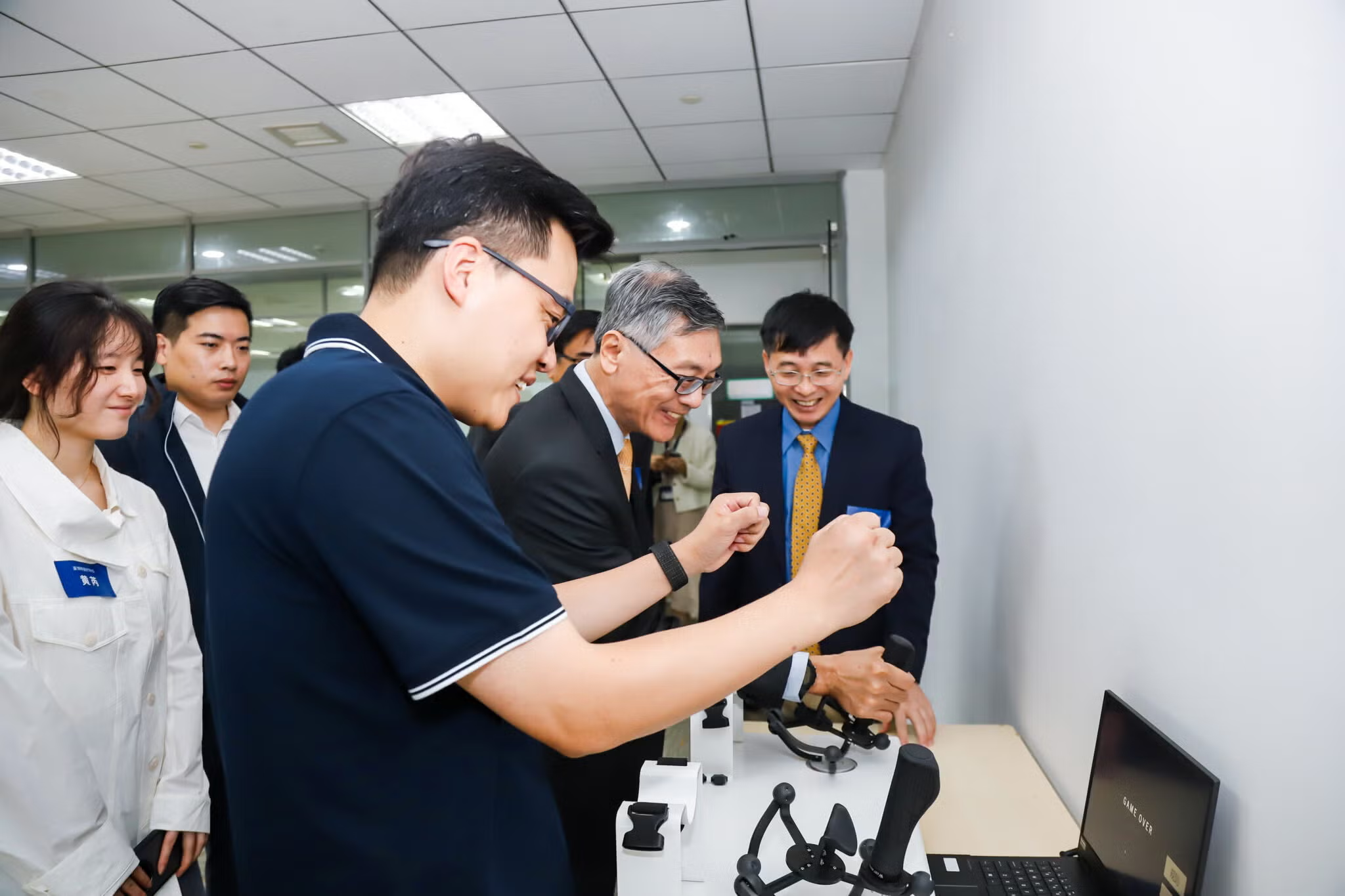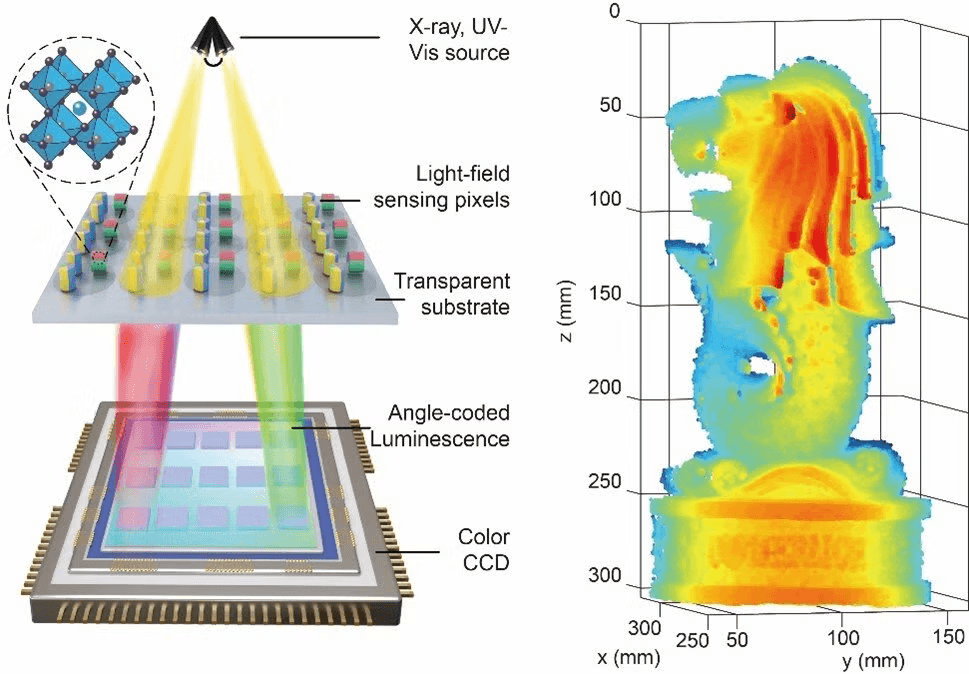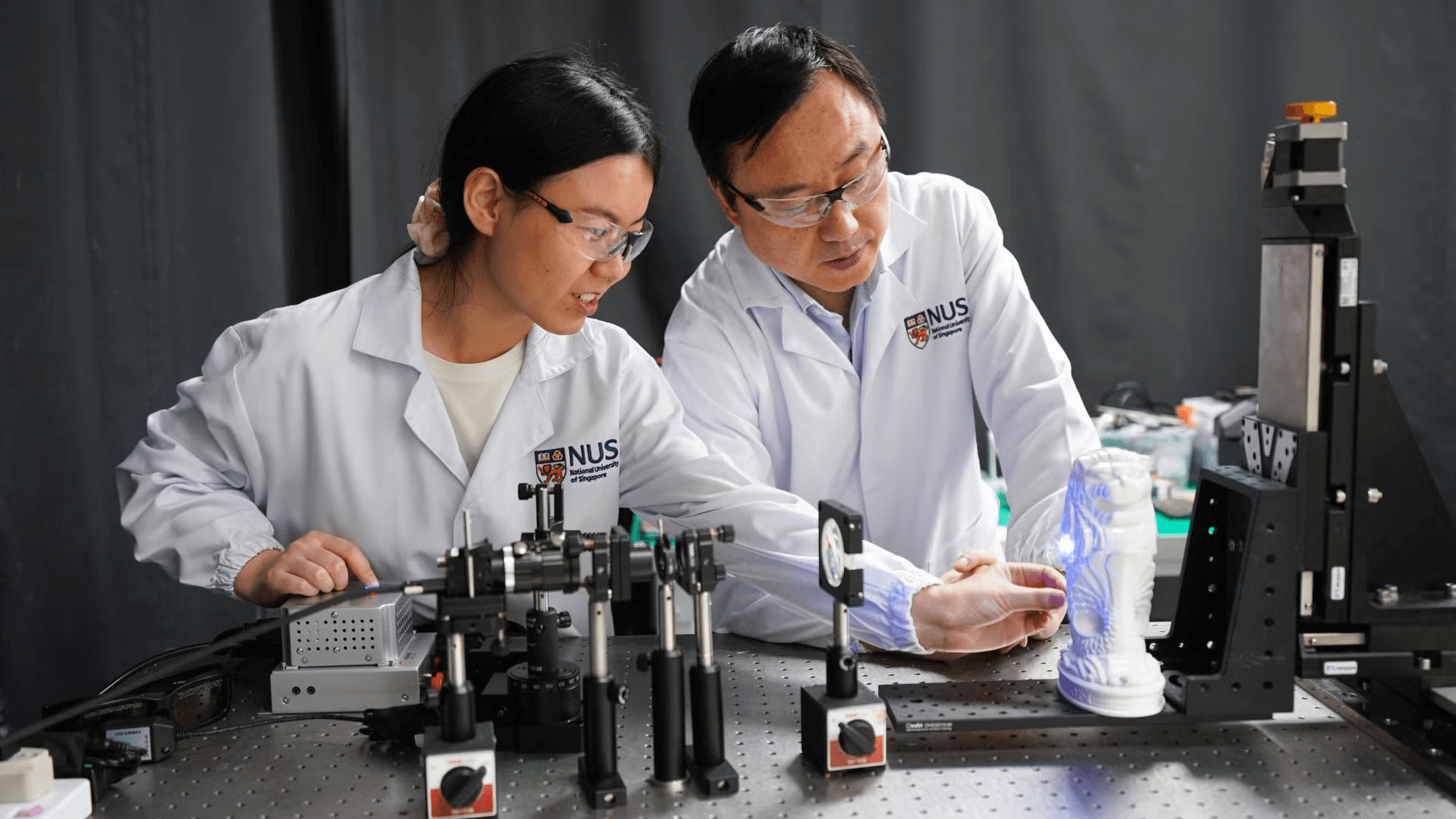
The site-selective late-stage functionalisation of C-H bonds in complex molecules developed from our studies is a very useful class of reactions. This method could potentially find broad application in olefin synthesis, structural modification of pharmaceuticals and natural product synthesis.
Prof Wu Jie, NUS Department of Chemistry
NUSRI Suzhou’s novel 3D imaging sensor offers unprecedented clarity and a broad application range, enhancing operations in various industries from autonomous vehicles to healthcare.
A new imaging sensor developed by NUSRI Suzhou researchers could revolutionise how we see the world. The sensor can capture 3D images with unprecedented clarity, making it possible for cars to see the road ahead in real time, surgeons to view the intricate details of our bodies, and virtual reality to feel more immersive than ever before.
The sensor developed by the NUSRI Suzhou team led by Professor Liu Xiaogang, a Principal Investigator at the NUS-led research programme in China, stands apart from conventional imaging tools. While standard cameras snap flat, two-dimensional photos, this novel sensor can detect both the intensity and direction of light rays, rendering them into a vivid 3D image.
The team’s findings were published in the journal Nature.
A new dimension in 3D perception
Central to this breakthrough are tiny compounds known as perovskite nanocrystals. Depending on the angle of incoming rays, these nanocrystals can emit light in various colours.How the nanocrystals interact with light rays can also be tweaked through a chemical sleight-of-hand by introducing small amounts of impurities into the crystal structure. When integrated into a device, they can convert these light rays into a colour-coded output, which is then used to construct a 3D image.
Compared to conventional counterparts, the team’s sensor excels with its expansive angular measurement range, superior angular resolution, and extended spectral response—all of which enable it to capture 3D images with unparalleled depth and precision.
“Traditional light-field detectors have limitations, especially when capturing light beyond the visible spectrum. Our sensor, however, can detect a broader range, from X-rays to visible light, underscoring its adaptability across diverse applications,” explains Prof Liu, who also holds an academic position at the NUS Department of Chemistry.
Indeed, the team’s discovery isn’t just about capturing better photos. The potential applications are vast. Consider autonomous vehicles: equipped with this sensor, they could more adeptly gauge road conditions, modulating speed to pre-emptively navigate around hazards. In healthcare, surgeons might harness its capabilities to gain an unprecedented view of a patient’s anatomy, facilitating more accurate and safer surgical procedures.
Shining a light on the future of imaging

Figure showing the design (left) and output (right) of 3D light-field sensor. The designed device (left) encodes the light field as colour output. Patterned perovskite nanocrystals arrays convert different directions of light into different colours, which can be detected by a colour charge-coupled device camera. The right image shows a reconstructed 3D depth image of a Merlion model produced by the camera. Image credit: Yi Luying
The team has applied for an international patent for the technology and is awaiting approval. They are also actively exploring avenues to further refine the spatial accuracy and resolution of their light-field sensor, including the incorporation of higher-end colour detectors.
“We are exploring other advanced technologies to optimise the arrangement of perovskite crystals on our sensors—a strategy that could lead to enhanced spatial resolution,” adds Prof Liu. “Moreover, by experimenting with materials beyond perovskite, we aim to expand our sensor’s detection range.”

